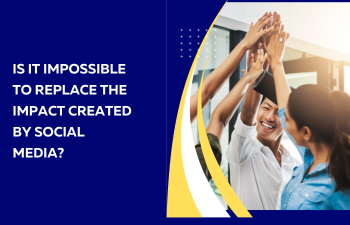 Social Media Marketing
Social Media Marketing
Is it Impossible to Replace the Impact Created by…
As of my last update in September 2021, it is not accurate to say that it is impossible to replace the impact created by social media. While social media has undeniably transformed communication, marketing, and the way people interact with each other, the digital landscape is continuously evolving. New technologies and platforms may emerge, and consumer behaviors can shift over time.
Social media’s impact has been profound, and it has become an integral part of modern society. It has revolutionized how individuals connect, share information, and engage with content and brands. Businesses have leveraged social media to reach broader audiences, build relationships, and drive sales.
However, it’s important to recognize that technological advancements are constant, and new platforms and methods of communication may arise. While social media currently holds significant influence, it’s not unprecedented for dominant technologies to be replaced or evolve into something new.
For example, before social media, online forums and chat rooms were popular platforms for digital interaction. As technology evolved, social media platforms took over as the preferred means of communication.
While social media’s impact is substantial at present, future developments may bring about new ways for people to connect and share information. The key lies in staying adaptable and open to technological shifts while understanding that the way we communicate and engage online may continue to evolve.
It’s worth noting that even if social media were to evolve or be replaced, the principles of digital communication, content sharing, and online marketing would likely remain relevant. The underlying need to connect with others, share information, and engage with audiences will persist, regardless of the specific technologies used.
As my information is up to September 2021, I recommend staying up to date with current trends and developments in the digital and social media landscape to better understand how it may change in the future.
